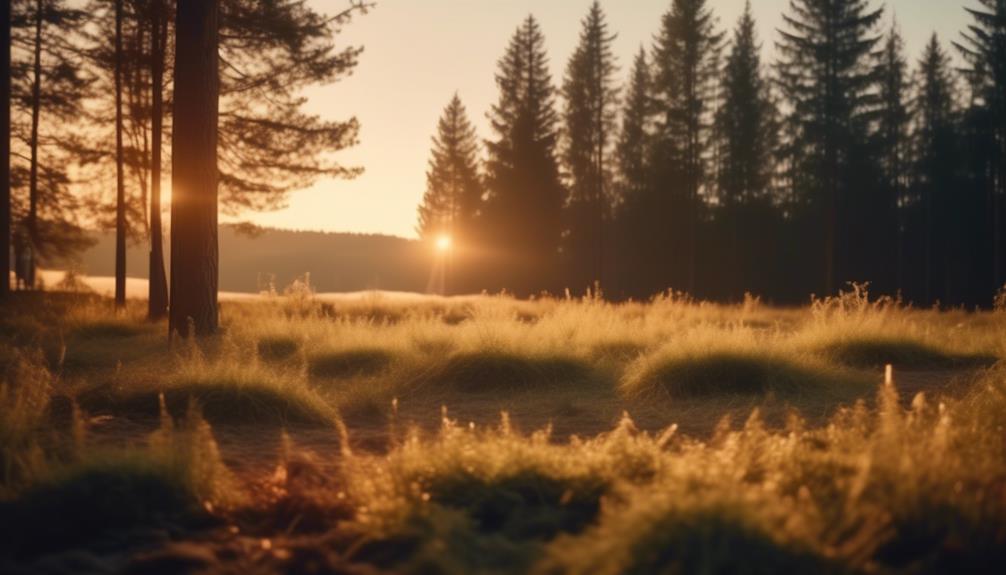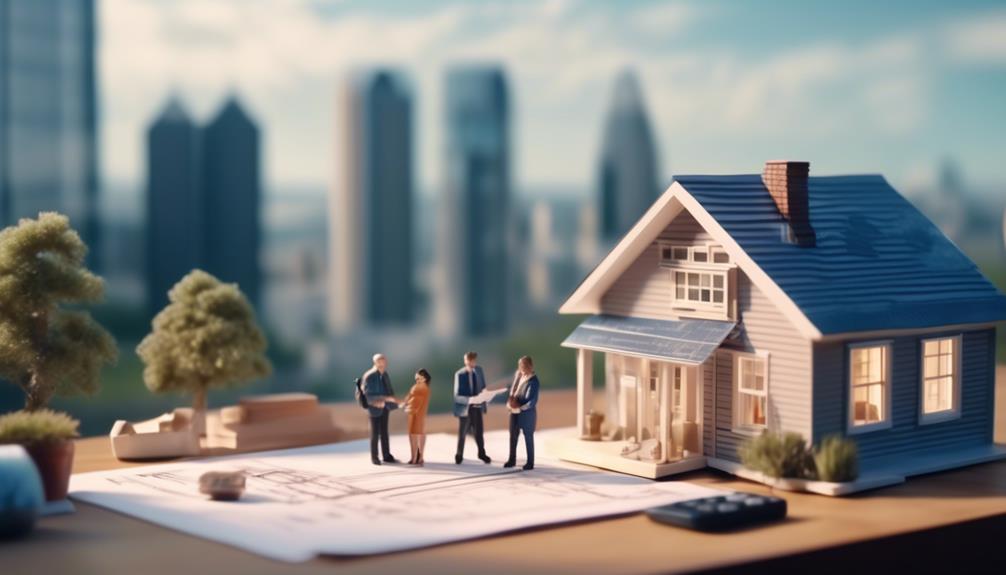As you unfurl your map in search of the perfect tiny home location, remember that the quest for downsized living isn't just a throwback to simpler times but a forward leap into a movement that's gaining modern momentum.
You've likely heard the romantic tales of tiny home life—simplicity, freedom from debt, and a greener footprint. However, it's crucial to temper the idyllic with the practical. You'll need to navigate through a labyrinth of zoning regulations, grapple with the hidden costs of ownership, and ensure that your new abode meets all your lifestyle needs, not just now but into the future.
And while the thought of customizing a petite space to your taste is appealing, you must also ponder the realities of space limitations and local community integration. These are not mere details, but significant considerations that will shape your tiny home experience.
So, where should you start, and how can you be sure that you're making the right decisions for your tiny life adventure?
Stay tuned as we explore these pressing questions, preparing you for the big leap into your small space.
Key Takeaways
- Research local zoning regulations and determine if your desired location permits building a tiny house.
- Budget for upfront and ongoing expenses, including construction, utilities, permits, maintenance, and insurance.
- Consider the ideal location based on zoning laws, climate, accessibility, and access to essential services and utilities.
- Understand financing options available for tiny homes and calculate long-term costs to ensure affordability.
Assessing Zoning Regulations
Before investing in a tiny home, you must understand the local zoning regulations that will dictate where and how you can legally reside. Zoning laws vary widely, so you'll need to research whether your desired location permits building a tiny house.
Some areas have specific zones or even a tiny house community where these homes are encouraged. Elsewhere, you might face challenges finding a place to park your tiny home, as traditional residential zones may not allow for this innovative housing model.
As you navigate these legal frameworks, you'll discover that being well-informed is crucial. Ensure you're compliant with the necessary codes and standards; this due diligence will save you from potential legal headaches and help secure your investment in the burgeoning world of tiny living.
Understanding Ownership Costs
Understanding ownership costs is crucial before you purchase a tiny home. You'll need to budget not only for the upfront investment—construction, utilities, and permits—but also for the ongoing expenses like maintenance, insurance, and land rent.
It's essential to evaluate how these costs will affect your finances over time to ensure a sustainable investment.
Initial Investment Breakdown
When considering the purchase of a tiny home, it's crucial to break down the initial investment to fully grasp the long-term ownership costs. Here's what you need to consider:
- Building Expenses: Whether you're buying a pre-built model or contracting a home builder, include the cost of materials, labor, and any custom features in your calculations.
- Utilities and Maintenance: Tiny homes often have reduced utility costs, but it's still essential to account for these expenses, along with regular maintenance to keep your home in top shape.
- Insurance: Protecting your investment is non-negotiable. Explore insurance options to understand the premiums and coverage tailored to tiny homes.
Weighing the pros and cons of these costs ensures you're making an informed decision, setting you up for innovative and sustainable homeownership.
Long-Term Financial Commitments
Having dissected the upfront costs, it's equally important to consider the long-term financial commitments that come with owning a tiny home. Unlike traditional homes, tiny houses offer potential for long-term cost savings, but they still require a thorough financial strategy.
You must budget for insurance, property taxes, and utilities—expenses that don't disappear after purchase. Regular maintenance and occasional repairs or upgrades must also be factored into your ongoing budget.
Researching insurance tailored for tiny homes is key to securing affordable coverage. Additionally, if you're leasing land, remember to include rental fees in your financial planning. Assess the full financial implications, including resale value, to ensure that buying a tiny home aligns with your economic goals and innovative lifestyle.
Choosing the Ideal Location

When selecting the perfect spot for your tiny home, you must first navigate zoning laws and land-use regulations to ensure your dwelling complies with local ordinances.
Consider climate and environmental conditions, as they'll significantly impact your living experience and home's sustainability.
Proximity to essential services and accessibility should also weigh heavily in your decision, affecting your daily convenience and quality of life.
Zoning and Land Regulations
Before investing in a tiny home, it's crucial to understand the local zoning laws and land regulations to ensure your chosen spot permits this unique style of living.
When selecting the ideal location for your Tiny House on Wheels, consider these key factors:
- Zoning Requirements: Confirm the location allows for permanent or temporary residency. Some areas have strict Zoning and Land Regulations that may not accommodate tiny living.
- Utility Access: Ensure there's access to essential utilities like water, electricity, and sewage. This is vital for comfortable and sustainable living in a tiny home.
- Land Costs: Understand the financial implications of renting or buying land, as this will affect your overall budget when Buying a tiny home.
Climate and Environmental Factors
Considering the climate and environmental factors is essential when selecting the ideal location for your tiny home, as these will significantly influence your comfort and the home's sustainability. You'll want to delve into local zoning regulations that pertain to tiny houses, ensuring they permit your intended use while respecting ecological standards. Here's what's important to know:
| Factor | Why It Matters |
|---|---|
| Local Zoning Regulations | Ensure tiny house residency aligns with environmental codes. |
| Proximity to Utilities | Access to services supports sustainable living. |
| Material Durability | Choose weather-resistant materials for climate resilience. |
Familiarizing yourself with building codes and the environmental impact of your tiny house also ensures safety and aligns with your green values. Remember, sustainable tiny house living goes hand-in-hand with informed decision-making about location and construction.
Accessibility and Services Proximity
Moving beyond climate considerations, it's crucial to evaluate the accessibility of your tiny home and how close it's to essential services. Here are key factors to keep in mind:
- Transportation Options: Ensure your tiny house is within reasonable distance to public transportation or major roadways, facilitating easy travel to work, friends, and family.
- Healthcare Facilities: Proximity to medical services can be a lifesaver. Consider the distance to the nearest hospital or clinic from your potential home location.
- Daily Necessities: Your home should be near enough to shops, grocery stores, and other essential amenities to make daily errands practical.
Selecting a tiny house location with good accessibility and services proximity isn't just convenient—it's a strategic move that enhances your living experience.
Navigating Tiny House Financing

Understanding your financing options is a critical step when you're planning to invest in a tiny home. Don't overlook the costs associated with the land, permits, utilities, and maintenance. It's key to research financing options tailored for tiny house purchases, considering sizes and specialists in the field.
Traditional mortgages mightn't be available for tiny homes, so you may need to look into alternative methods such as crowdfunding or personal loans.
Craft a comprehensive financial plan to ensure your tiny house dreams are affordable over the desired time frame. Innovative financing solutions are out there, but they require diligence and a thorough understanding of the unique tiny house market.
Stay informed, and you'll find a path to finance your tiny living space.
Planning for Space Limitations
When planning your tiny home, it's crucial to choose multifunctional furniture and built-in storage to make the most of your limited space. As you navigate the space limitations inherent in Tiny House living, remember the Narrow: 22 Shotgun principle—efficient design in a compact form.
Here's how you can plan effectively:
- Opt for furniture that serves multiple purposes, such as a sofa bed or a dining table that converts to a workspace.
- Install creative built-in storage solutions, like under-stair drawers and wall niches, to seamlessly organize your belongings.
- Embrace a minimalist lifestyle, frequently decluttering to ensure everything you have serves a purpose.
Investigating Insurance Options

Before securing your tiny home, it's essential to explore various insurance options to ensure comprehensive protection for your unique dwelling. Investigating insurance options can be complex, but don't let that deter you. Make sure you know which policies are applicable: RV policies suit mobile tiny houses, while manufactured home insurance is better for stationary ones. The traditional house insurance won't cut it; tiny homes require specialized coverage.
Factors like your house's value, its location, the breadth of coverage, and your deductible will influence the insurance costs. You can't afford for anything to go wrong, so it's vital to consult with insurance providers to grasp the specifics of tiny house coverage. They'll guide you through policies tailored for tiny living, ensuring your investment remains secure.
Frequently Asked Questions
What I Wish I Knew Before Building a Tiny House?
You'll wish you'd known about space limitations, zoning challenges, lifestyle adjustment, and resale concerns before building your tiny house. These factors significantly impact your innovative living experience and long-term satisfaction.
What Are the 3 Negative Features of a Tiny House?
You'll face space limitations, zoning challenges, and resale difficulties with a tiny house. Minimal storage also means you'll have to downsize significantly or find creative solutions for your belongings.
Is It Hard to Get Approved for a Tiny Home?
You'll face financing challenges, zoning restrictions, and insurance hurdles. It's vital to explore all loan options and consult with experts to ensure you meet approval criteria for your innovative tiny home project.
What Is a Good Budget for a Tiny House?
You'll need a budget that accounts for size constraints, zoning laws, hidden costs, and resale value. Aim for flexibility and innovation to tackle unexpected expenses and maximize your tiny house investment.
Conclusion
In the journey to simplify your life with a tiny home, remember it's not just about downscaling space—it's about upsizing fulfillment.
Navigate the legal mazes and crunch the numbers with care. Choose a nest that fits not just your budget, but your dreams.
Secure it against life's storms with the right insurance. Tiny living isn't just a choice; it's a bold step toward a life uncluttered by excess, rich in experiences.
Take that step wisely.

